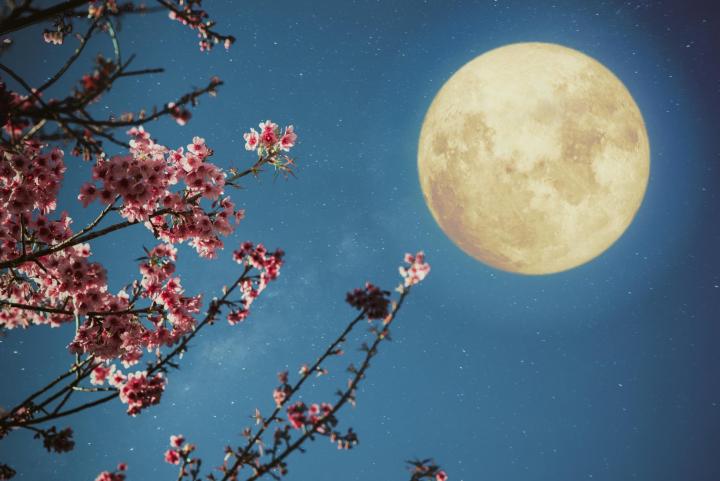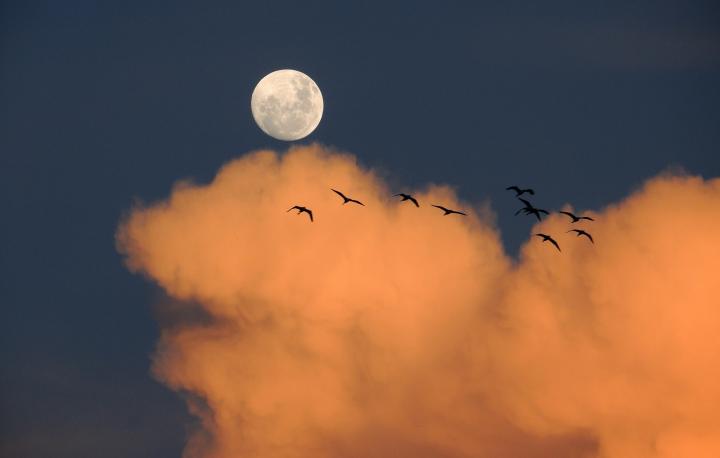
Photo Credit
Satao/Shutterstock
Subhead
The Curious Link Between Easter, the Equinox, and the Moon

Easter Recipes
More Like This
What kind of trees are those in the picture? They look pink on my screen. My guess is cherry blossoms but as I say, my guess. Please start listing the specific names of the flowers, trees. and other plants that are in these beautiful pictures. Never been much on plants, only vegetable ones, and are not familiar with them. I do very much enjoy looking at them and often think of getting some of them. Please list the plant name under the pictures for those of us not in the know. Thanks.
I think those are Japanese Cherry Blossom Trees.
What kind of trees are those in the picture? They look pink on my screen. My guess is cherry blossoms but as I say, my guess. Please start listing the specific names of the flowers, trees. and other plants that are in these beautiful picture. Never been much on plants, only vegetable ones, and are not familiar with them. I do very much enjoy looking at them and often think of getting some of them. Please list the plant name under the pictures for those of us not in the know. Thanks.
In the Eastern Orthodox Church, we do not refer to the celebration of the Resurrection of our Lord as "Easter." We call it the Pascha of our Lord. It is preceded by a lengthy period of fasting and other spiritual disciplines.
We also do not regard Sunday as the Sabbath, but as The Lord's Day. It is a mini-celebration of the Resurrection throughout the year.
That said, I see nothing wrong with taking a pagan holiday and repurposing it to a Christian use. Also, it is clear from the book of Acts that non-Jews are not required to become Jewish in order to become fully Christian. Therefore, expecting them to learn all the minutiae of Jewish law, calendar, custom, etc., is not called for.
Of course there were not the formal ecclesiastical celebrations of the traditional Christian holidays in the time of the Apostles! The Church was not yet fully established, and it was under great persecution. But Scripture also instructs us to do things in good order. In the beginning, the Resurrection was probably celebrated in conjunction with Passover. As the Church established itself as a separate entity from Judaism, it naturally developed its own traditions and Holy Days and seasons. By the second century, the Pascha of Our Lord was beginning to be celebrated separately, as evidenced by a mid-2nd-century Paschal homily by Melito of Sardis.
Christ told HIS apostles that just as Jonah was in the belly of the whale for 3 FULL Days aka 72 HOURS, so HE would be in the grave for same length of time. That said, HE was Crucified on Wednesday afternoon, Buried BEFORE Sundown, & Resurrected AFTER Sundown Saturday!! Jewish Day starts at SUNDOWN not midnight each day. Sooooo, HE was in the grave ALL day Thursday*Friday*Saturday....not just portions of those 24 hour periods.
People really need to Research the Truth instead of just taking a human's word as "gospel"!
Passover is a High HOLY Day. It started at Sundown Wednesday aka beginning of Thursday during this timeline in history. Thursday was a day of Rest, just as the 7th Day Sabbath*Saturday is & Wednesday*Friday were the Preparation days for those Sabbaths.
***Ishtar aka "easter" is a Pagan celebration the UNholy Roman system adapted giving it a "christian" definition. Nowhere in the Early Apostolic*Christian church History was this or any other so called "christian" Holliday kept!!
We do realize that Christ died on the Friday of Passover week, and rose again on the Sunday. Since Passover follows the lunar cycle, we can more easily peg when Easter is celebrated by the Christian church by remembering it is actually tied to Passover week.
is the Satao/Shutterstock print available for purchase
It's an interesting article. But you left out that Easter was originally a Pagan holiday and this is why the moon cycle is involved. It's Pagan names are Ostara or Roster. It has to do with the Earth coming alive again and fertility, hence the bunnies, chicks and eggs.
Thank you for the insightful and thoughtful article, much needed at this juncture of time.
Great article! Thank you. Must also say the first picture showing the gorgeous cherry blossoms and the full moon is absolutely stunning !! (where might that be?)
- « Previous
- 1
- 2
- …
- 10
- Next »











Comments